By Louise Irvine
The WMODA scavenger hunts were very popular with visitors of all ages at our original Dania Beach location. Now, we are working on a Dragon Quest for our Hollywood Museum, and the research has unearthed some fascinating facts about these wondrous beasts. Delve into some dragon lore before your visit and discover their mysterious relationship with snakes.

Lladro Great Dragon
Chinese Dragons
In Chinese mythology, the coiled snake symbolizes the beginning of the Universe and is the precursor to the dragon. Snakes are referred to as “little dragons,” and after thousands of years, they grow horns and wings to become divine dragons. Marco Polo described dragons during his 13th-century travels in China. He claimed they were 50 feet long with two short legs and three claws like a tiger. They lived in caverns and terrorized locals with their sharp teeth in jaws wide enough to swallow a man. It is now believed that Marco Polo’s “dragons” were Chinese alligators, which some writers suggest inspired dragons. Many of the Chinese-style dragons at WMODA were designed by Charles Noke for the Royal Doulton Potteries between the 1890s and the 1930s. Wedgwood also depicted many different types of Chinese dragons on their dazzling luster wares in the early 1900s.

Doulton Spanish Ware Dragon Jar
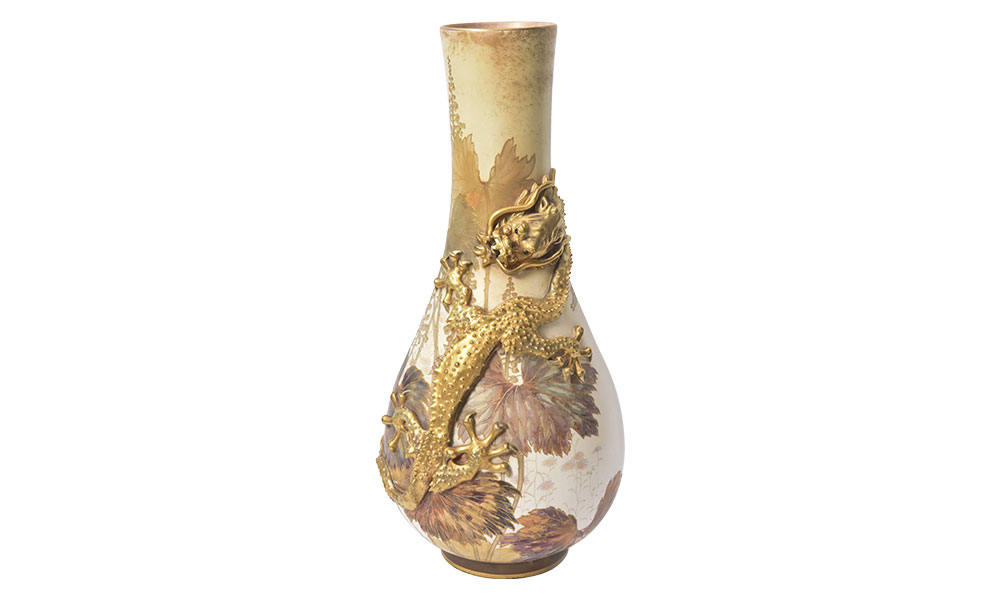
Doulton Burslem Dragon Vase by C. J. Noke
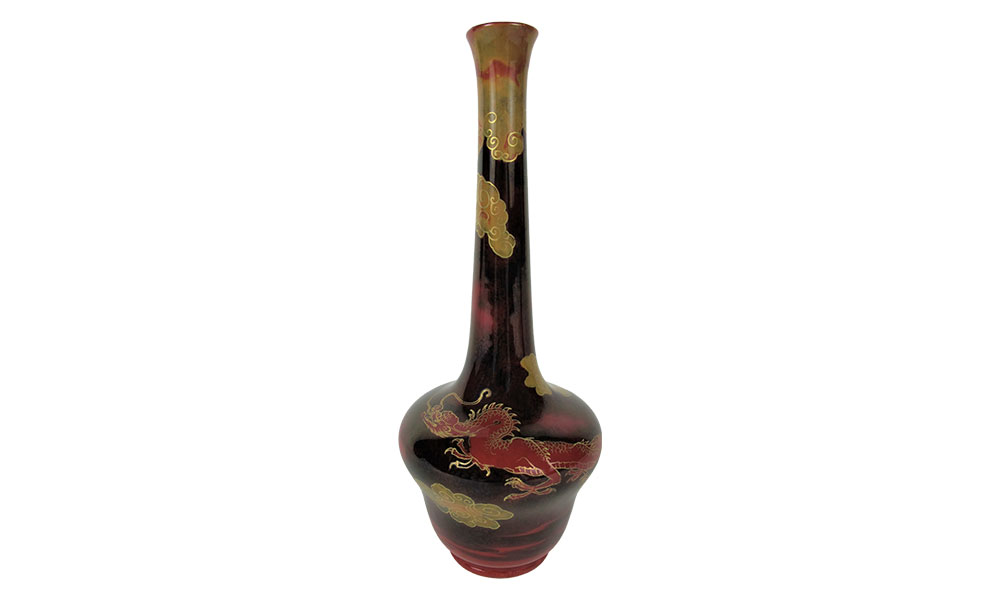
Royal Doulton Flambe Dragon Vase

Royal Doulton Flambe Dragon Vase
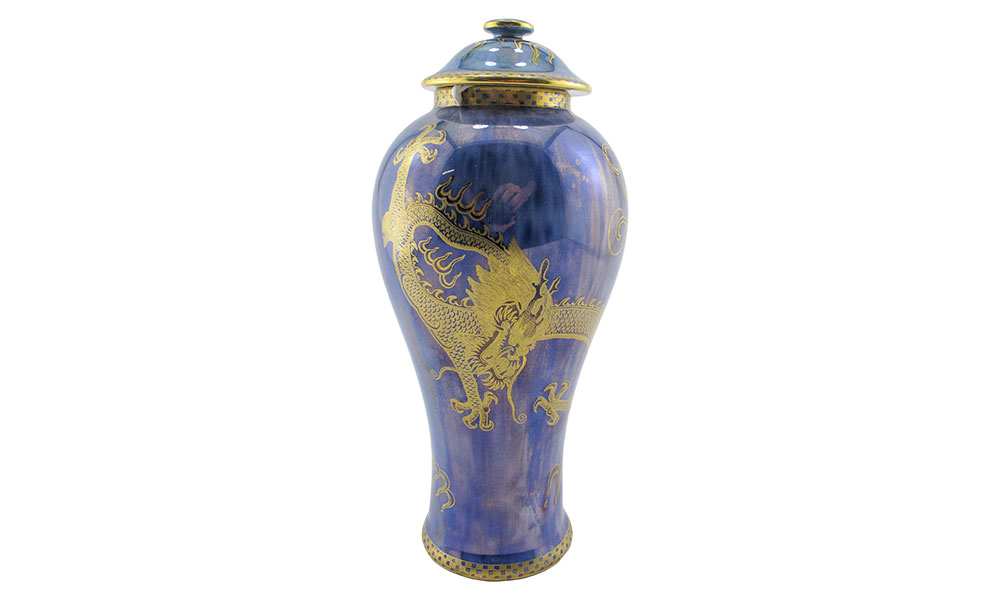
Wedgwood Dragon Luster Jar
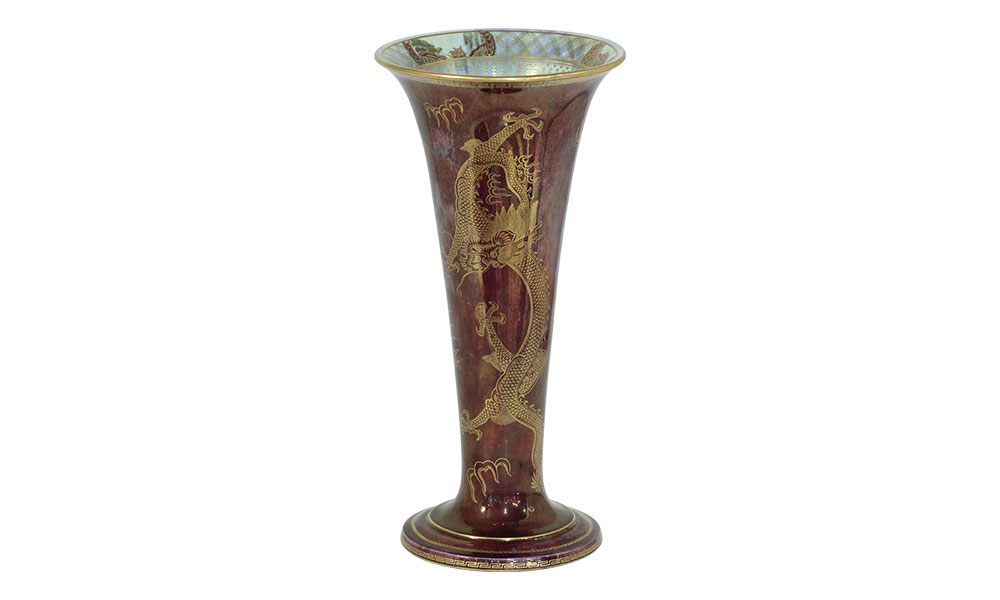
Wedgwood Dragon Luster Vase
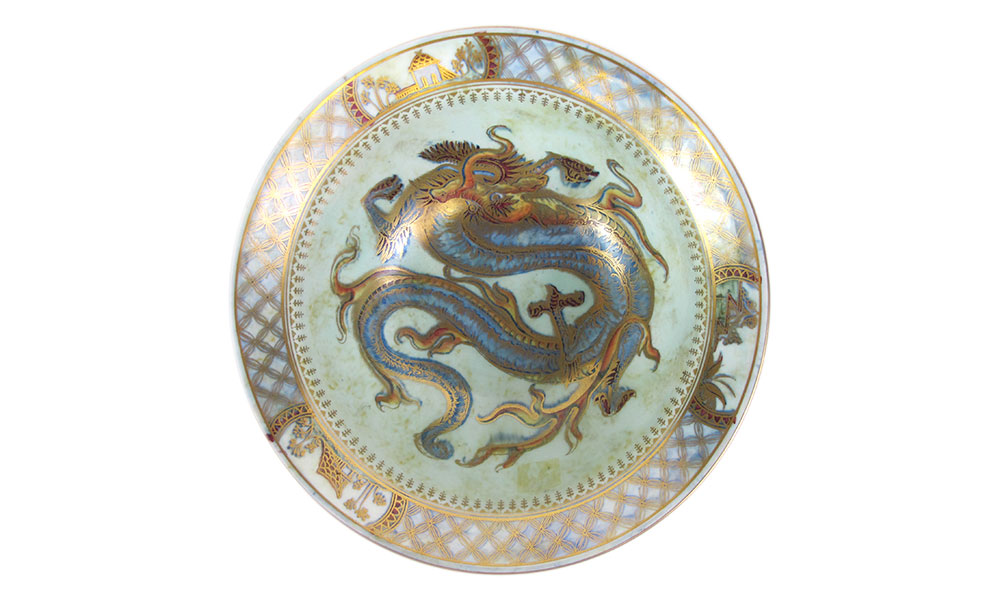
Wedgwood Luster Coiling Dragon Bowl
Dragonslayers
European dragons also evolved from snakes, and even their name is derived from the Greco-Latin word for serpent, draco or drakon. In the Iliad, Homer’s description of the drakon is clearly a snake, although he is not specific about the type. Later descriptions suggest pythons and accounts of spitting cobras may be the origin of fire breath. Over the centuries, mistranslation, exaggeration, and mythology transformed the dragon into a fabulous, terrifying beast. The association between snakes, dragons, evil and the devil in the Bible led to legends of heroic Christian saints slaying the beasts, most notably St. George. There are several dramatic representations of dragonslayers at WMODA.
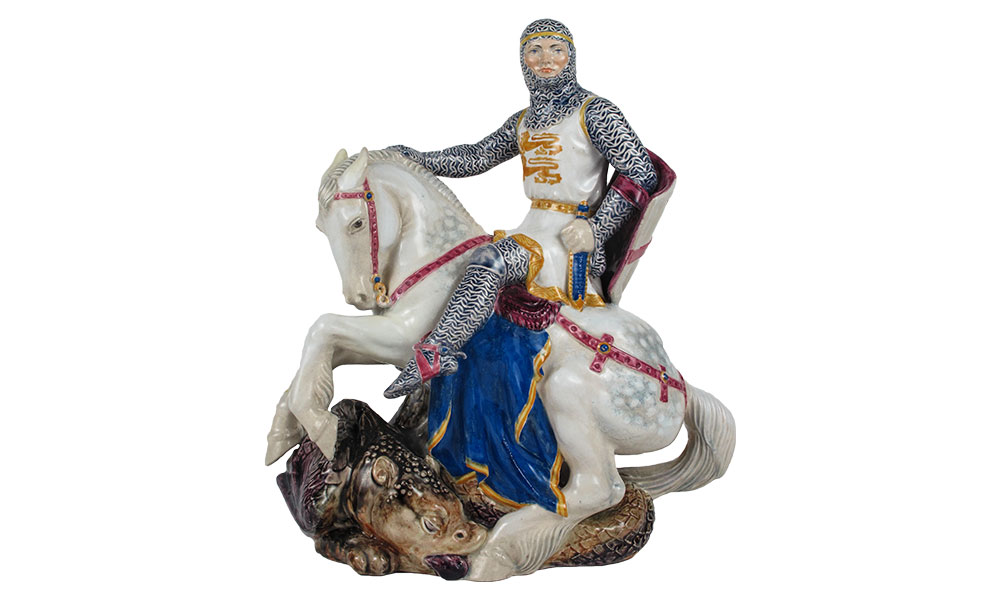
St. George and Dragon by C. Vyse

Dragons and Fairies by H. Warr
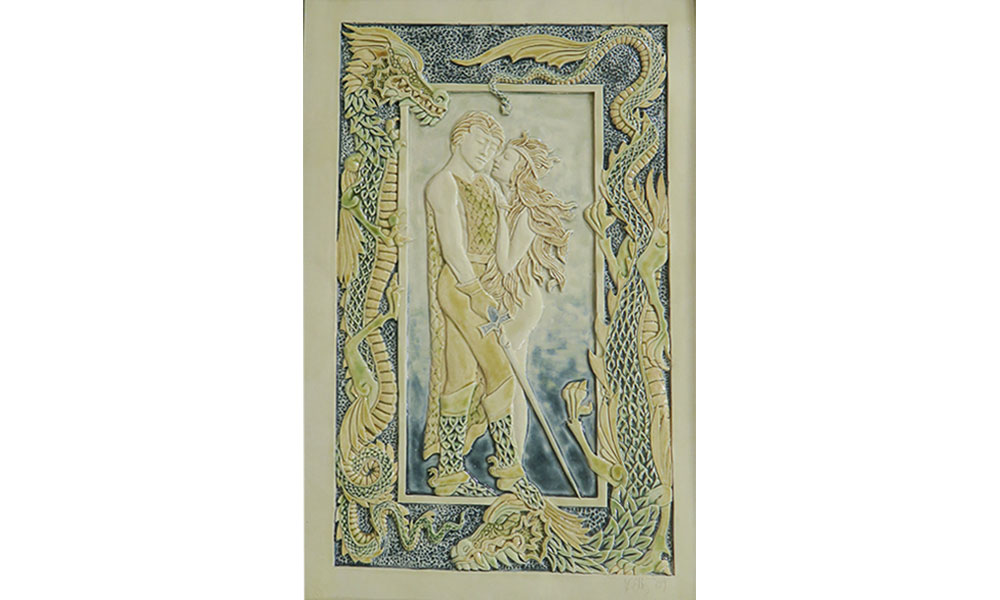
The Dragon Slayer by V. Ellis
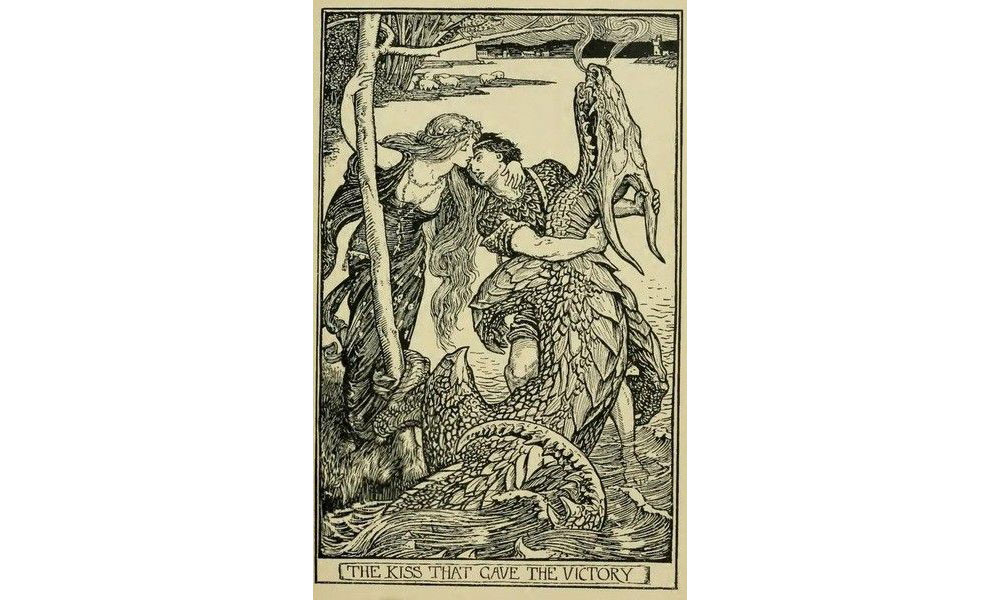
Dragonslayer by H. J. Ford

St. George and Dragon Verona Manuscript
Bestiaries and Bogus Dragons
Pictures of dragons appear in medieval bestiaries, which were compendiums of animals, both real and imagined with moralizing texts. The Aberdeen Bestiary from the 12th century depicts a serpentine dragon from Ethiopia attacking an elephant which is not safe despite its huge size. Pierre Belon, a French natural historian, was one of the first to print images of a winged dragon in 1553, which he claimed to have seen in Egypt. This vision inspired subsequent pictorial representations, including several by Ulisse Aldrovandi, who is considered the father of natural history studies. Aldrovandi is renowned for his spectacular cabinet of curiosities, and one of his most treasured exhibits was the Dragon of Bologna, which reputedly hissed like a snake and was killed in 1592. Of course, it was a fake presented for propaganda purposes, and experts now believe it was comprised of a grass snake and a scaly fish torso with toad’s legs.

Dragon and Lion Clavis Artis
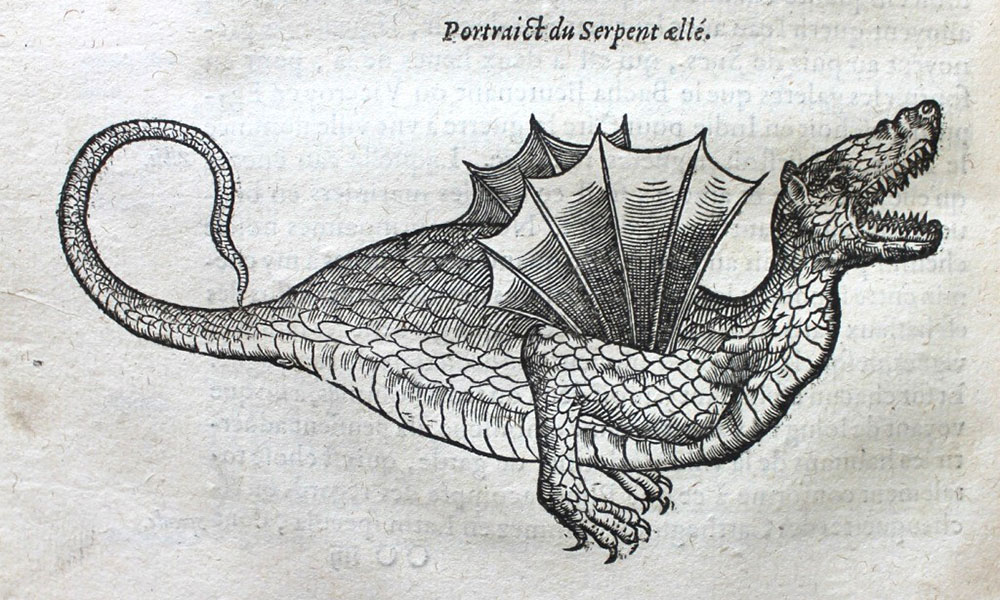
Dragon by P. Belon
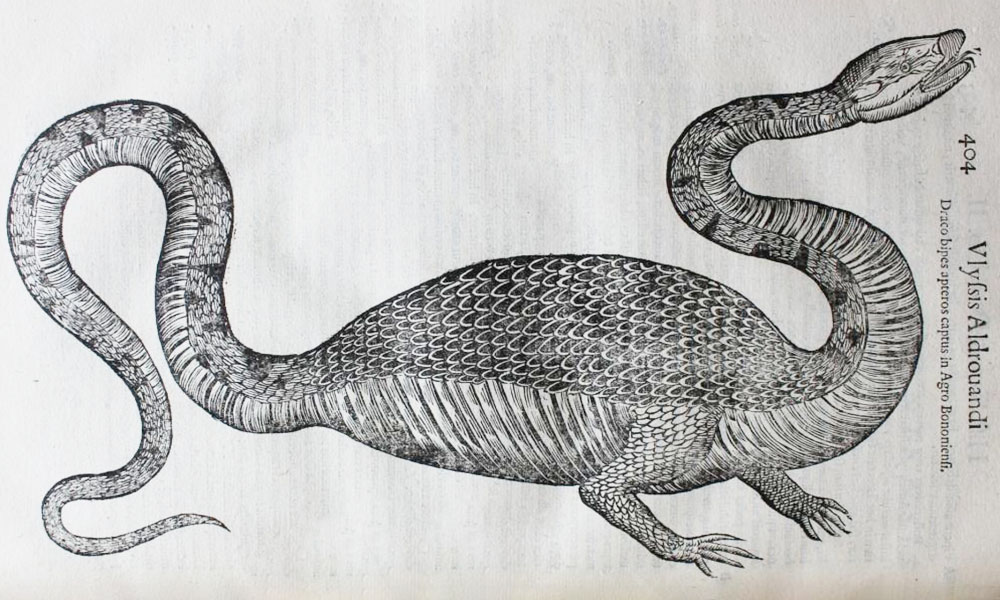
Dragon of Bologna by U. Aldrovandi
Here be Dragons
As Western explorers colonized the world, reports of dragons came back to Europe. Cartographers identified uncharted lands with the images of strange monsters, which led to the expression “Here be dragons,” where potential dangers were thought to lurk. As recently as the 17th century, scholars wrote of dragons as though they were scientific facts, with their anatomy painstakingly recorded. It was not until the 18th century that natural historians agreed that dragons did not exist.

Jabberwock Tile by W. De Morgan

Doulton Jabberwock by M.V. Marshall
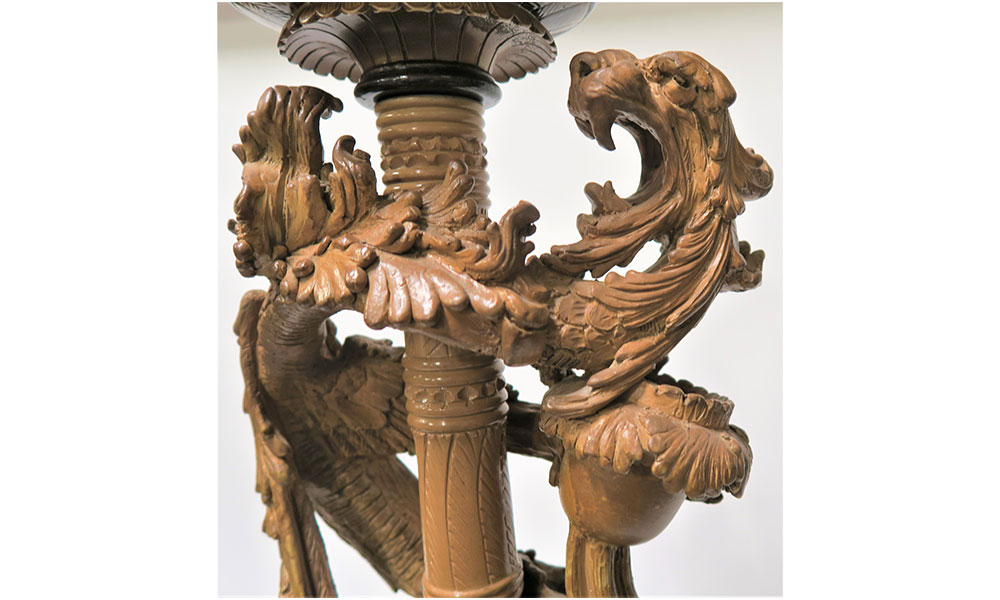
Doulton Candelabrum Detail by M.V. Marshall
Dinosaurs and Dragons
Many have speculated that historical discoveries of fossilized dinosaur bones encouraged the evolution of dragon mythology. They cite skeletons of flying pterosaurs, aquatic plesiosaurs, and other prehistoric animals from the Jurassic era. The Victorians were obsessed with natural history, especially fossils and paleontology. Their growing knowledge of dinosaurs, from the Greek for “terrible lizards,” combined with legend and folklore to create distinctive Victorian dragons like the Jabberwock in Lewis Carroll’s Alice’s Adventures in Wonderland.
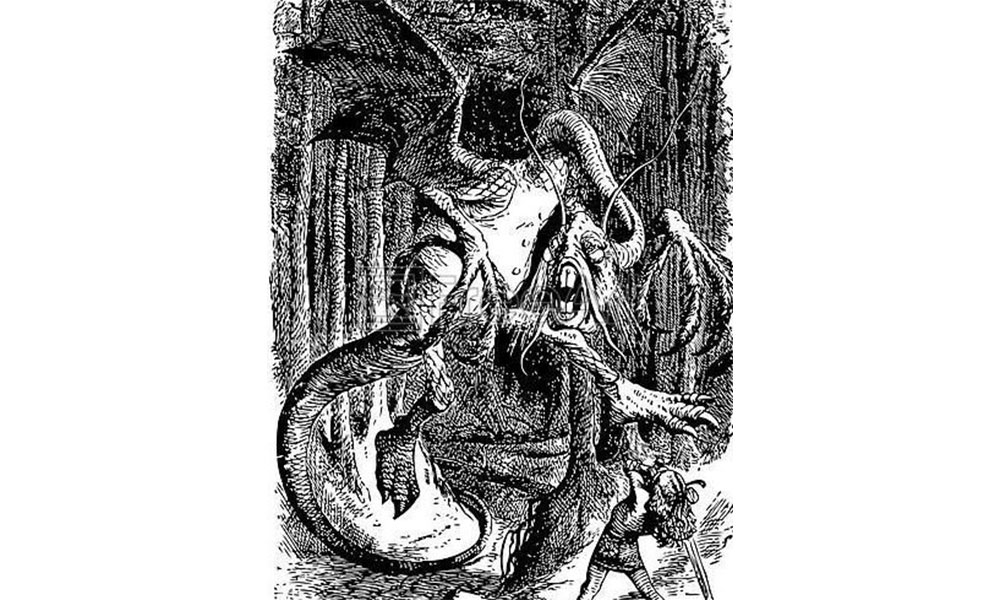
Jabberwock by J. Tenniel
Dragon Quest
Fanciful creatures slither, swim and soar through the ceramic art galleries at WMODA. Many date from the Art Nouveau era and reflect the sinuous dragons drawn by Anton Seder, a professor of design at Strasbourg, who published several books featuring ornamental animal motifs in the late 1800s. Serpentine dragons writhe around Mark V. Marshall’s weird and wonderful stoneware designs for Royal Doulton. The eccentric Martin Brothers also depicted a variety of dragons on their Victorian vases.

Martin Brothers Dragon Jardiniere
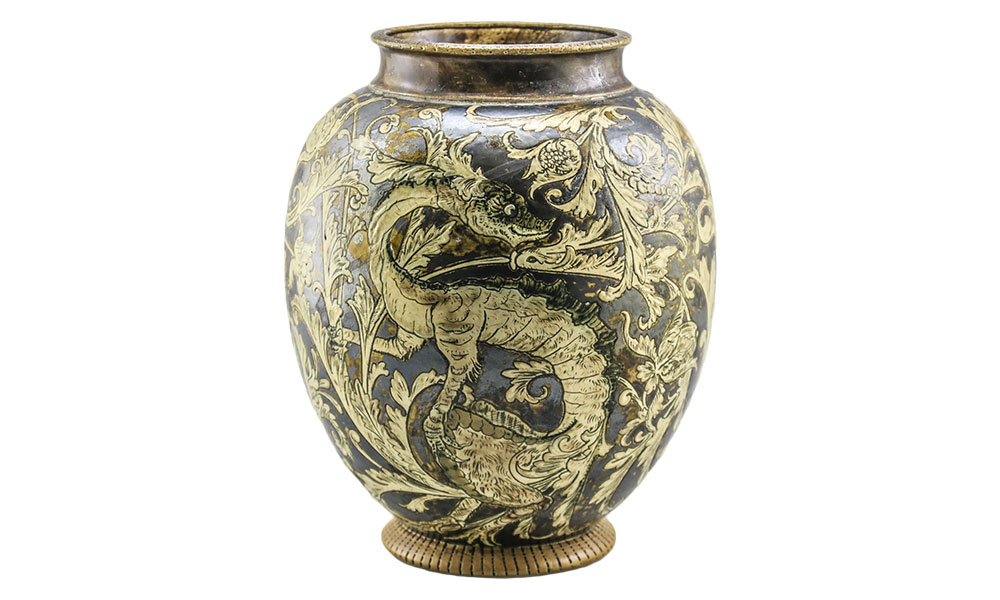
Martin Brothers Dragon Vase
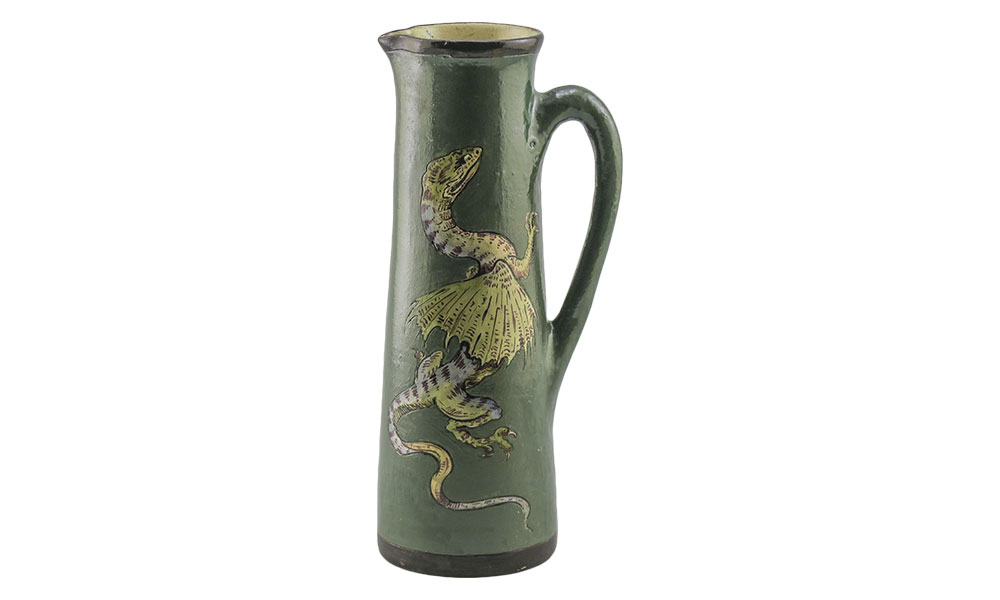
Martin Brothers Dragon Jug
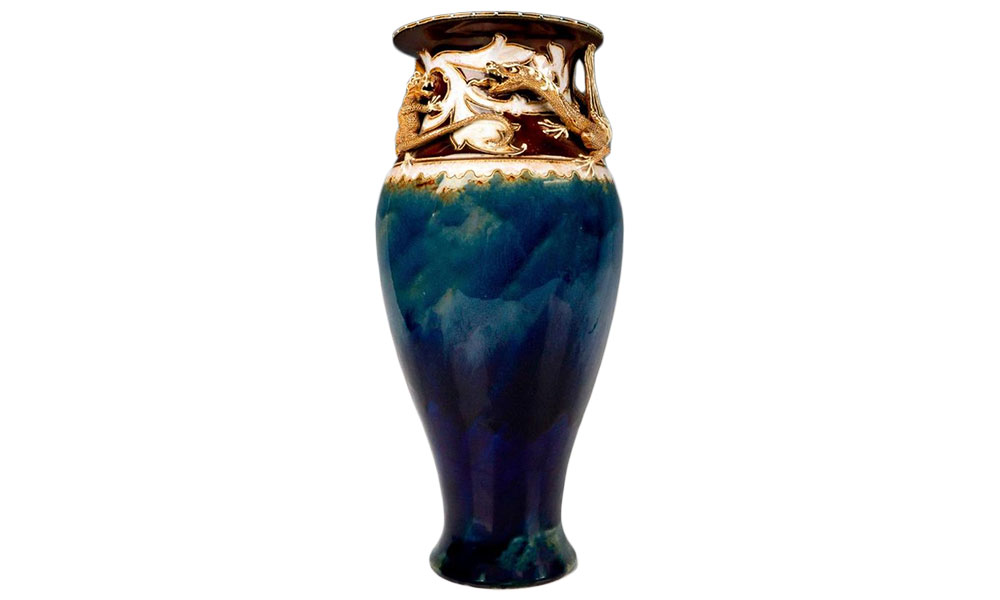
Doulton Dragons Vase by M. V. Marshall for the Art Union
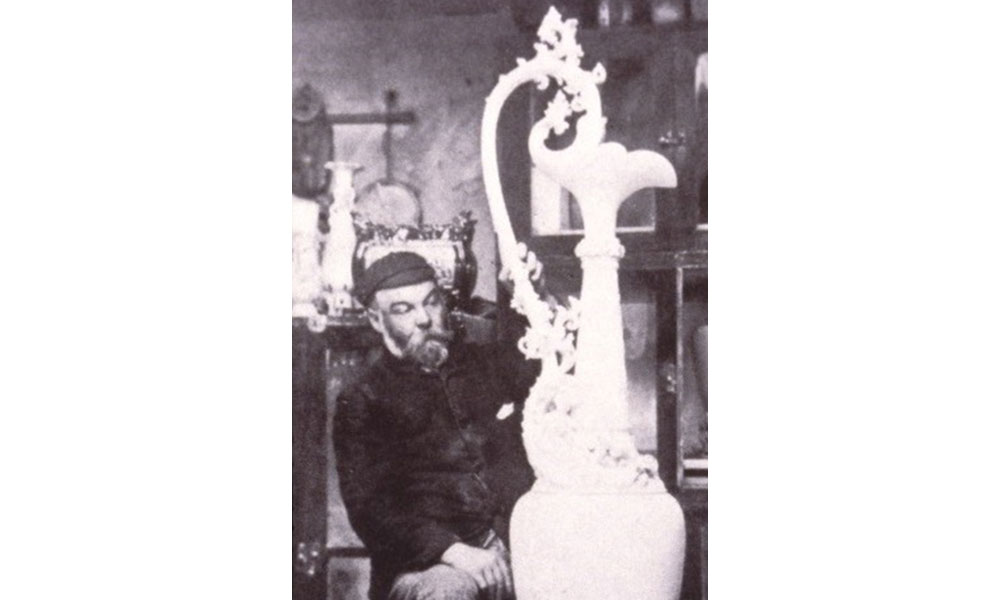
Mark V. Marshall
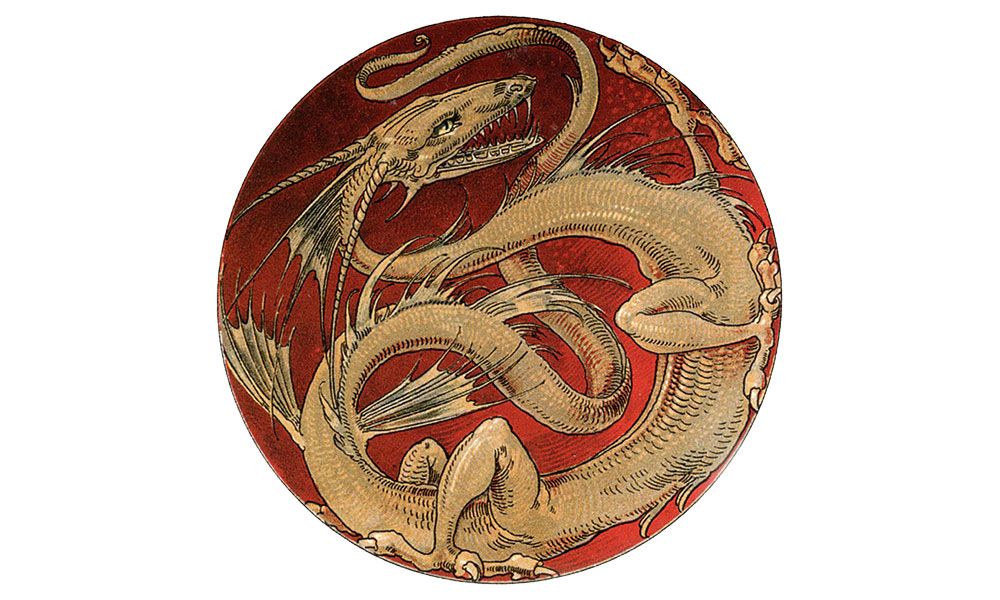
Dragon by A. Seder
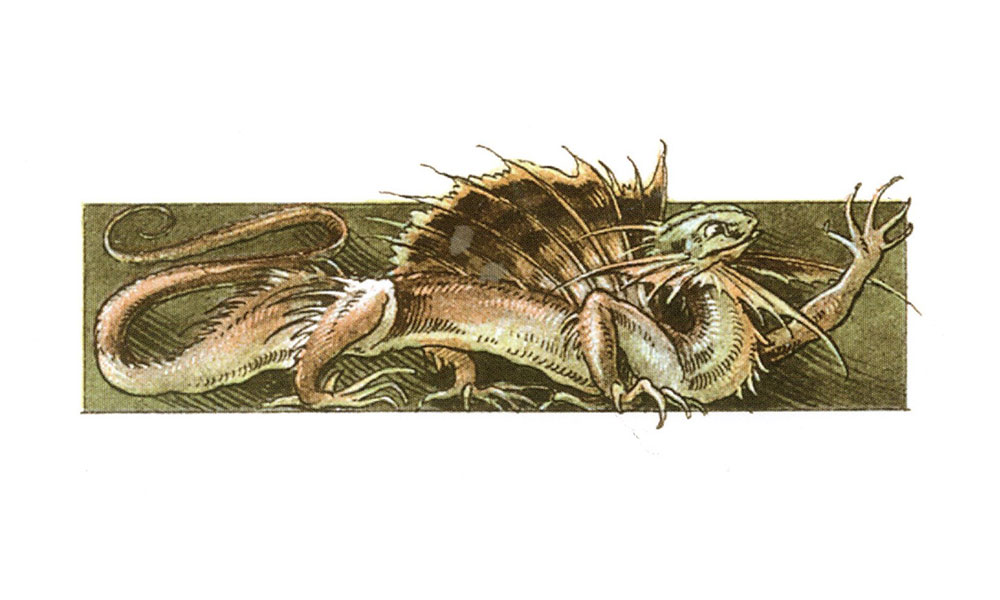
Dragon by A.Seder
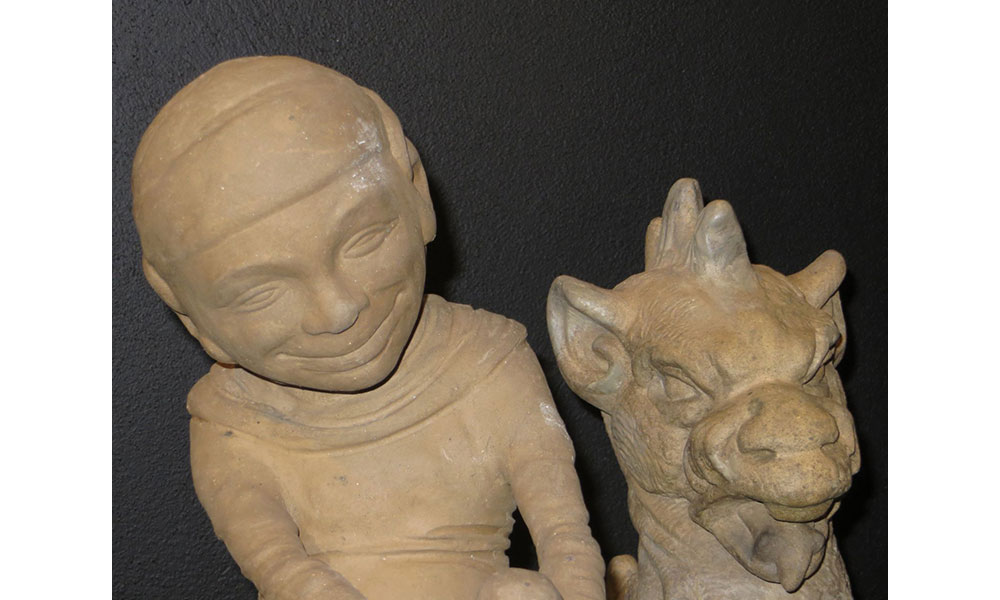
Doulton Terracotta Pixie and Dragon
House of the Dragon
We continue to fall under the spell of dragons today in fantasy literature, role-playing games, movies and TV series, such as the phenomenally successful Game of Thrones. A giant inflatable dragon recently landed on top of the Empire State Building in New York City to celebrate the launch of the second season of House of the Dragon. Dragonologists sometimes attempt to domesticate dragons, as in the Harry Potter series and a recent collection of children’s books and movies even explains How to Train Your Dragon!
Click here for more about the wondrous dragons to look for at WMODA.
Year of the Dragon – WMODA | Wiener Museum
Here Be Dragons – WMODA | Wiener Museum
